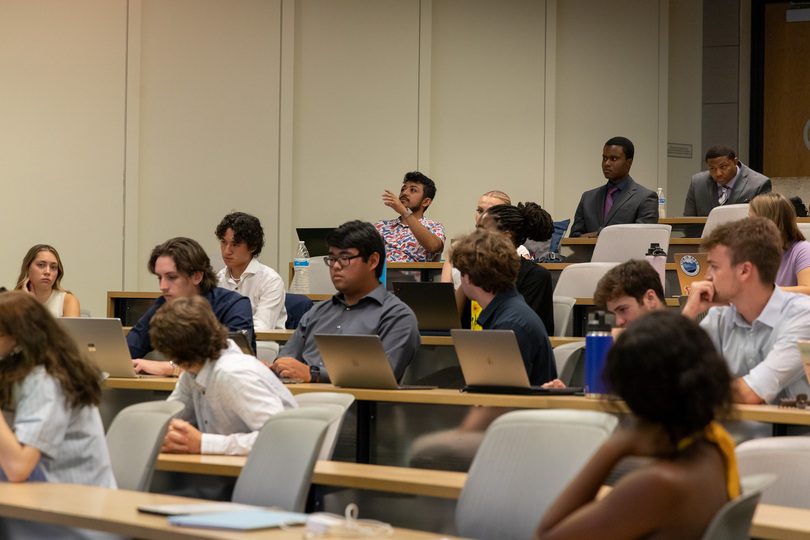SA, SU’s ADA committee gather information on 10,000 building violations

Though the university has begun some construction plans to make the campus more accessible, many of them are on a smaller scale, and SA and the ADA Committee are seeking short-term and long-term solutions for accessibility concerns. Nina Gerzema | Asst. Photo Editor
To support student journalism and the content you love, become a member of The Daily Orange today.
Syracuse University’s Student Association and Americans with Disabilities Act Committee are collecting information regarding more than 10,000 ADA violations at the university.
Many of SU’s buildings were constructed before the ADA was passed in 1990, so they do not need to comply with the ADA regulations, SA President David Bruen said. Though the university has begun some construction plans to make the campus more accessible, many of them are on a smaller scale, and SA and the ADA Committee are seeking short-term and long-term solutions for accessibility concerns.
“Changing ramps and addings signs are all meant to address accessibility and physical structures on campus and start to chip away at these inaccessible points on campus,” Bruen said. “We need to think about a universal design in everything that we do. I know the university is moving in that direction, but it’s also our role to keep pushing that.”
Jordan Beasley, SA’s vice president of diversity and inclusion, said the university should’ve addressed accessibility concerns during the summer months, when many students aren’t on campus.

Megan Thompson | Digital Design Editor
Beasley said the ADA focuses on inaccessibility in average conditions. While many of SU’s buildings will meet standards in warm, sunny weather, they fail to do so as conditions evolve throughout the year. This is crucial, Beasley said, as Syracuse is the snowiest city in the U.S., and ice can make walking to class dangerous.
“ADA standards are not really meeting student needs…whether we talk about accessibility in the classroom or walking around campus,” Bruen said. “Weather is a part of accessibility.”
Some buildings, like Falk College, are also inaccessible to students with physical disabilities. Some students are not able to use the steps leading up to the building, and have to take a longer route in order to enter.
Buttons for some automatic doors designed to help disabled students are defective as well, Bruen added. Students should report any defective buttons to campus officials, he said.
Overall, Beasley and Bruen want to address all issues by initiating a proactive approach rather than a reactive one. Beasley said that all situations need to be considered to prevent more problems further down the road.
“Whenever there is a barrier for diversity, equity, inclusion or accessibility that impedes belonging here at Syracuse University…it’s really important that we make sure that all students feel like when they touched foot on this campus they belong here,” Beasley said.





